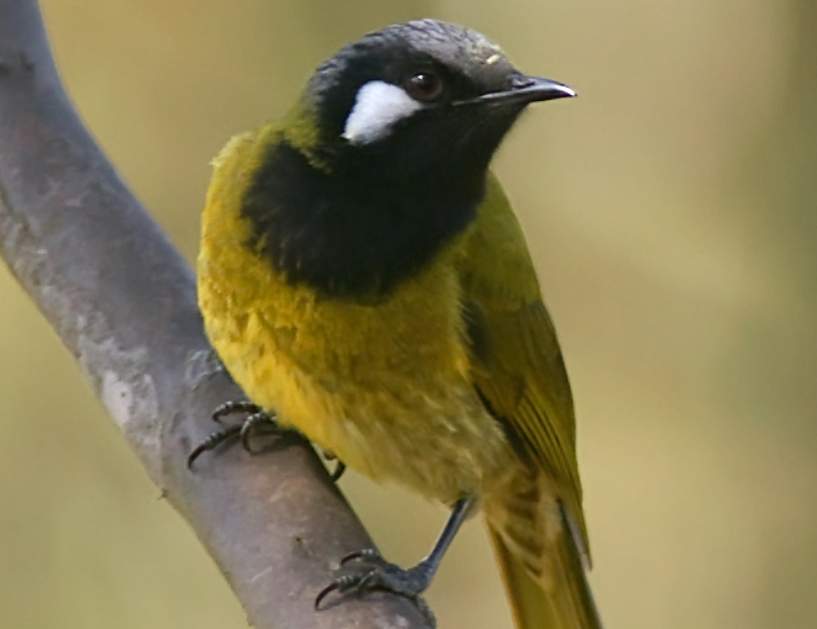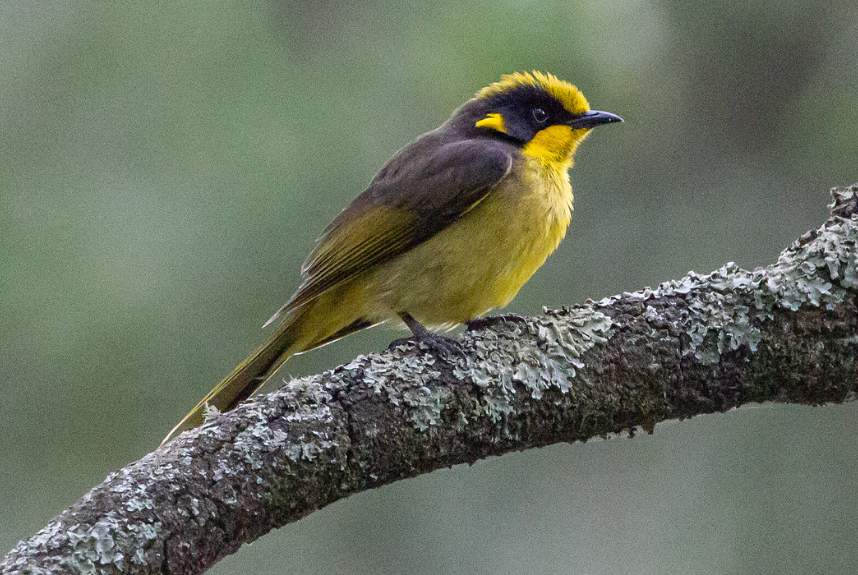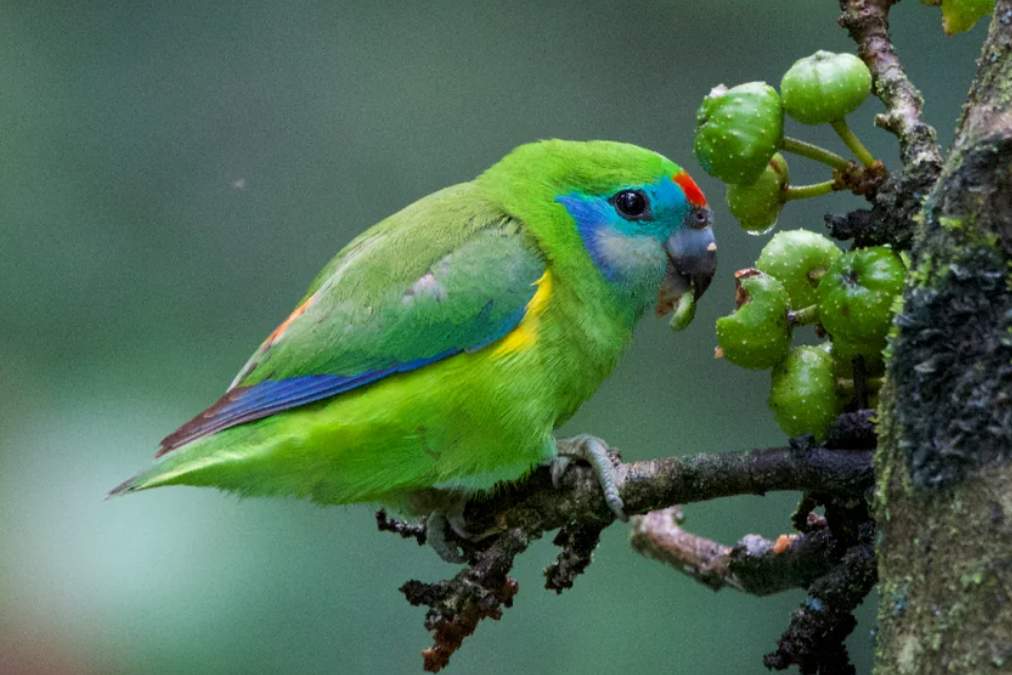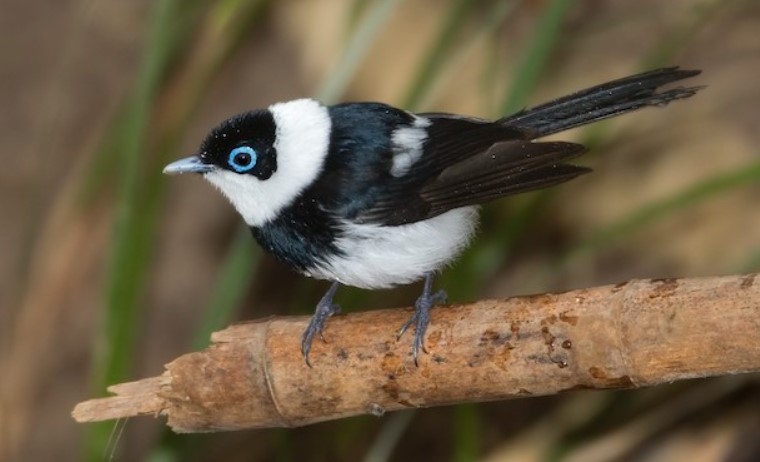Northern Goshawk “Accipiter gentilis” is about 48–62 cm in length with a wingspan of 95–125 cm. It is much the largest Accipiter but marked size difference between sexes: females average 15–20% larger and 60% heavier than males. The largest females are Common Buzzard-sized; the smallest males are not much longer than the largest female Eurasian Sparrow-hawks, although they are still twice as heavy.
The shape, plumage pattern, and flight action are typical of Accipiter. It is a moderately short-winged and long-tailed raptor with barred underparts in adults. (The tail is significantly longer than the wing, which is broad.) Inactive flight gives a series of rapid wing beats followed by a glide on flat wings with wings held partly closed. Seldom hunts from concealed perch, launching into swift and impressively agile pursuit low over trees and the open ground when soaring, holding wings flat or slightly raised. In-display flight flaps wings slowly.
The adult (particularly male) can be confused with the female Eurasian Sparrow-hawk but has a longer, broader arm and more pointed hand (slightly shorter and narrower also), with a more curved trailing edge (shows pronounced S-curve when gliding), a shorter tail with a more rounded, less square-cut tip, a more protruding head with the thicker-necked look, and a much more vigorous body that looks deeper and broader from breast to belly.
The Northern Goshawk looks more dark-hooded and often has bulkier, more conspicuous white under-tail coverts and frequently less obvious barring on the underside of flight feathers. Flight action is typically slower, heavier, more powerful, and more direct, with shallower wing beats and longer glides (but beware of displaying the Eurasian Sparrow-hawk with sluggish wing beats, creating the illusion of greater size).

It soars more frequently and tends to hold its tail more open when soaring. Unlike female Eurasian sparrowhawks, male Northern goshawks almost always appear larger when surrounded by carrion crows. The juvenile bird shares many characteristics with the adult, but it lacks the Eurasian Sparrowhawk’s prominent white undertail coverts and dark hood. Instead, it has bolder barring on the underside of its flight feathers.
Moreover, drop-like markings on underparts are not found in Eurasian Sparrow-hawk (but see Levant Sparrow-hawk), and neither is pale mottling on greater coverts. At any age, maybe told at a distance from Buteo buzzards by the smaller, more protruding head and bulkier body, broader arm but more pointed wingtips, longer tail, and quite different flight action.
From distant European Honey Buzzard (with which it shares a projecting head, long tail, and flat wings when soaring) by the bulkier body, more pointed wingtips, uniformly spaced, broad tail bars, and different flight action when traveling.
Related Reading: Brown Goshawk – The Stealthy Hunter of the Skies
The Gyr Falcon is characterized by a much shorter, less pointed hand, a broader arm, a markedly curved trailing edge to the wing, and a broad barring on the long tail. The adult female is substantially larger than the adult male, browner on the upper parts, and has more prominent white undertail coverts. The white supercilium contrasts less with browner (less blackish) crowns and ear coverts.
The juvenile bird is dark brown above with broad buff feather edgings: missing solid dark crown and face patch of adult, and supercilium diffuse or lacking; underparts often buff (instead of white), or even washed rufous, with the gloomy drop-like spots replacing barring of adult and dark barring on under-side of wings and upper-side of tail more noticeable (with a broad buffish tip to tail). It has pale mottling on the greater coverts.
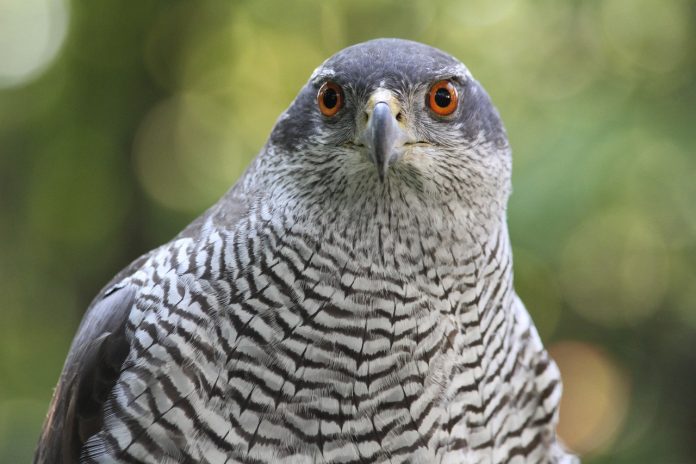
Northern Goshawk is normally a silent bird, but the alarm call near the nest is a loud, guttural ‘kyeee-kyee-kyee…’. Begging call of female a plaintive, melancholy ‘wheee-oh’. Both are louder, harsher, and deeper than in the Eurasian Sparrow Hawk.
Northern Goshawk is moderate and clinal, with the largest and palest (most blue-grey) populations in the north and east and the smallest and darkest in the south and west. It has four races, including the vagrant atricapillus from North America (nominate race illustrated).
However, the adults of both Buteoides (breeding northeasternmost of Europe eastwards) and the North American race Atricapillus are a little paler and more blue-gray above and paler-looking below due to finer barring. Whereas the juvenile buteoides are less heavily streaked below than the nominate race and have more extensive pale buffy marbling on wing coverts, with pale markings also on upper tail coverts.
Northern Goshawk is uncommon but can be found in forests and extensive woodlands (particularly coniferous), large clearings, and adjacent open country.
Related Reading: Cooper’s Hawk Bird Facts



